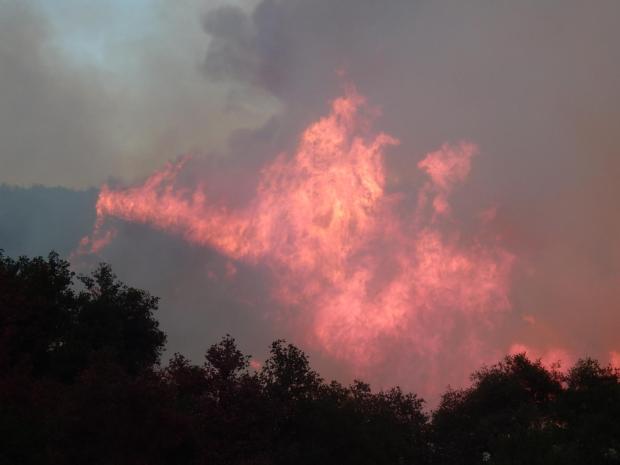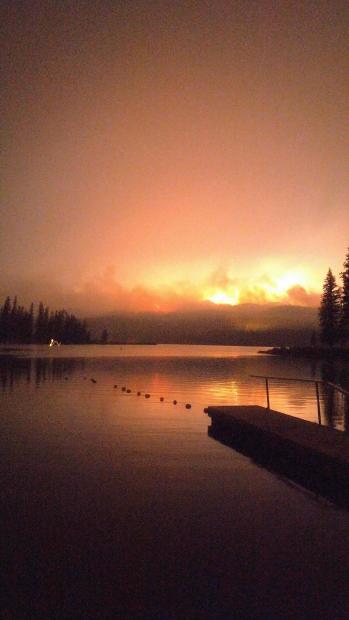
It’s not the way we fight wildfires in the West that’s the problem. The problem is the way we manage our fire-dependent forests.
Since 2000, 154 wildfires in the region have cost over $20 million each to control. Many of them cost several times more. Together, these costliest fires, which were less than one-tenth of 1 percent of all Western wildfires in the period, cost more than $9 billion to fight. If you factor in property losses, natural resource damage and environmental impacts, the true costs skyrocket, but they are rarely measured or accounted for. What can’t be ignored is that these unprecedented wildfires tell us we need a much better land-management strategy.
In the aftermath of 9/11, the federal government established a commission to recommend ways to prevent future terror attacks. Among other findings, the commission’s report faulted leaders for a “failure of imagination,” citing a system that was hamstrung by convention.
We face a similar predicament with the West’s wildfires. Nearly every summer, the wildfire season exceeds our imaginations, as each “worst-ever” disaster soon eclipses its predecessor. In the past 20 years, most of the 11 Western states have suffered their worst wildfires on record — several states have done so more than once. At a time when firefighting budgets have never been higher, the West is experiencing its worst wildfires since it first organized for fire protection more than a century ago. If the aim is to protect life and property and minimize natural resource damage — and to do so at the lowest possible cost, without compromising firefighter safety — then we are headed down the wrong trail.
We need to be exploring more imaginative approaches. Protection of human communities ultimately matters most, but sometimes we are simply unable to save homes. Despite state-of-the-art gear, training, determination and other resources, firefighters are rarely able to control the worst wildfires until they get some relief in the weather or a break in the fuels. Neither can managers deal with the compounding effects of climate change, deteriorating forest conditions and uncontrolled residential development at the wildland-urban interface. The West remains tethered to an unworkable protection strategy that is stalled at a dangerous impasse, while costs, losses, damages and deaths all keep mounting.

Imagine a credible commission tasked with investigating the West’s wildfire problem. Its members would examine the full range of contributing factors. They would probably conclude that the West’s wildfire problem is much more than a firefighting challenge — that it is, fundamentally, a failure to manage fire-dependent forest ecosystems at appropriate intensities, intervals and scales. They would find that many of today’s worst wildfire disasters are, ironically, occurring in drastically altered forests that tolerated fire better and burned much less severely 100 years ago.
A century of fire suppression and take-the-best-and-leave-the-rest logging has brought us to this place. But in confounding ways, our contemporary budgeting practices, regulatory controls, land management plans and market forces are often at cross purposes with the most effective means to protect the West’s fire-prone forests. Here’s why:
- Budget appropriations provide almost unlimited funding for wildfire control but starve budgets for wildfire mitigation.
- On national forests, managers are required by law to meet certain regulatory standards for proposed actions aimed at reducing wildfire risks. Yet in the absence of these actions, wildfire impacts that are often far worse are exempt from any analysis of their effects.
- Depending on the way fire-prone landscapes are managed, wildfire risks can become high, but national forest plans don’t require that those risks be identified or considered before plans are implemented.
- In most places, thinning the forest understory needs to precede prescribed burning. Yet few markets exist for small-diameter trees and deadfall, even when the true cost of wildfires could easily justify subsidizing their removal. We need to develop and encourage more of these markets. As this woody material continues to accumulate, wildfire risks only grow, and the business of firefighting becomes ever more lucrative.
Historian Barbara Tuchman, in her book, The March of Folly, observed that governments often remain stubbornly addicted to a counterproductive course of action. They pursue the unworkable, she said, sacrificing the possible.
We all know that the West’s wildfire problem is getting worse, but we have been slow to confront this reality. Unable to envision future threats and explore solutions across the full range of contributory factors, we cling to an untenable position. Bound to convention, we are left to suffer the next unimaginable disaster.
It is time for a commission on wildfire.
Dale Bosworth is a former chief of the U.S. Forest Service and a board member of Treesource.org. Jerry Williams is a former director of fire and aviation management for the U.S. Forest Service. Both are now retired and living in western Montana.
Preventative Maintenance! How do we convince the government to subsidize fuel removal for the health of the forest and prevent or reduce the damage from fire. Bio-char is one solution for the small diameter trees and slash. Each region is different and has logistic issues, but let us start with the lowest fruit.
In a recent letter I wrote to national leaders, including the POTUS, I suggested some notions to address wildfires. It goes beyond a wildfire commission. To be clear, some immediate action is a must. However, my fear with a Commission that focuses just on wildfire, by definition, may be too narrowly defined. Accordingly, I am suggesting we utilize the collective insight and innovation of a wide range of partners so forests can better tolerate fire across all ownerships. Specifically, this includes convening a “Commission on the Stewardship of America’s Forests”, led by the Secretaries of USDA and DOI.
Further, I think the following is essential immediately:
1. Establish a USDA Forest Service led campaign that acknowledges that “aggressive forest management improves fire management.” The Forest Service is about conservation of landscapes along a rural to urban land gradient. Forest management needs to again be emphasized. The agency is not just a fire service.
2. Implement an aggressive fire management program that allows more of the right kind of fire at the right time at the right place, using both prescribed and wildfire. This can only be accomplished with a concurrent and equally aggressive forest management strategy that includes well-planned vegetation removals, including at least doubling of the current timber harvest program on the National Forests; from 3 to 6 billion board feet annually.
3. Implement a much more focused hazardous fuels program on the highest priority areas. This must include the expanded use of innovative biomass uses such as cellulose nanomaterials and advanced wood-composites for construction materials by creating high-value markets from lower-value wood. This will eventually reduce fire suppression costs by at least 12-15 percent. This year, that would be about $480 million that could have been redirected to forest management projects. In 2001, there was approximately 38 million acres of National Forests considered at high risk to fire. The figure is now about 80 million acres, after almost $5 billion in hazardous fuel reduction investments. Clearly, the current amount invested annually in hazardous fuel reduction is only about 20 percent of the needs. Thus, extreme targeting is a must.
I applaud the great insights of Chief Bosworth and Director Williams and want to reconfirm that something significant must be done if the required change of ensuring America’s forests, perhaps especially those in the west, are to become healthy, sustainable and more of an asset along a very complex rural to urban land gradient.
Very respectfully,